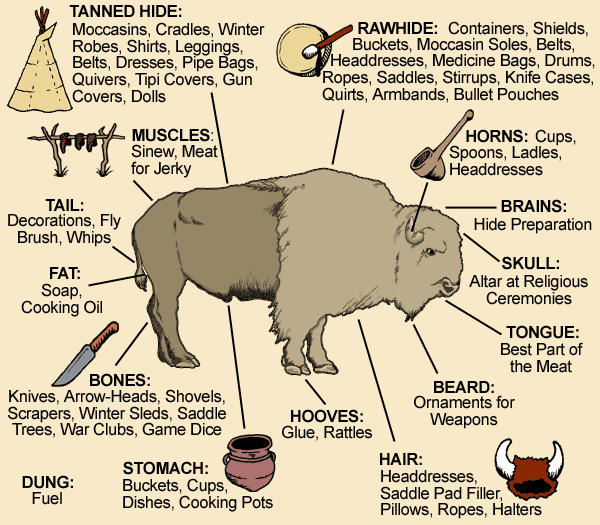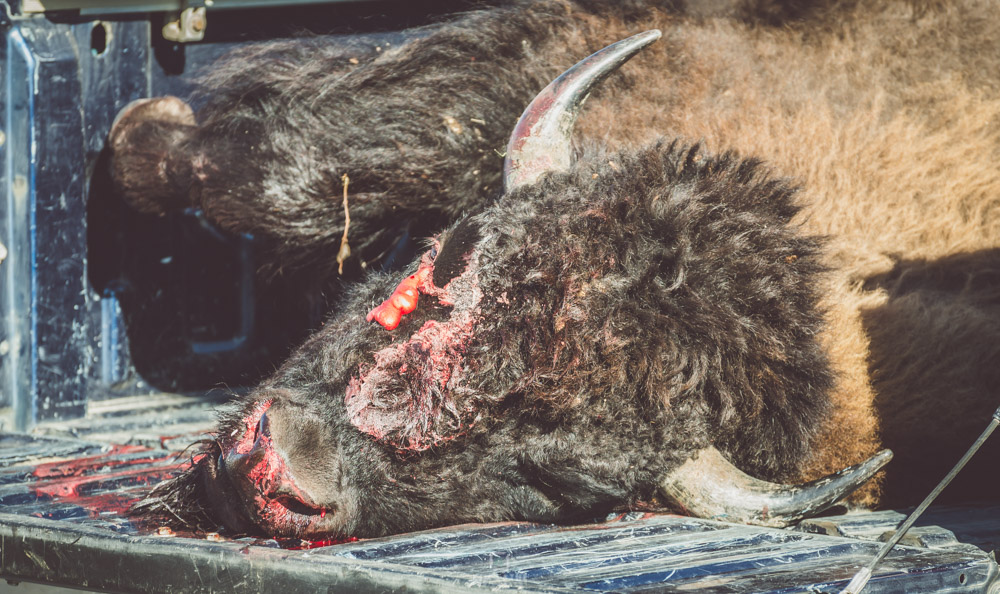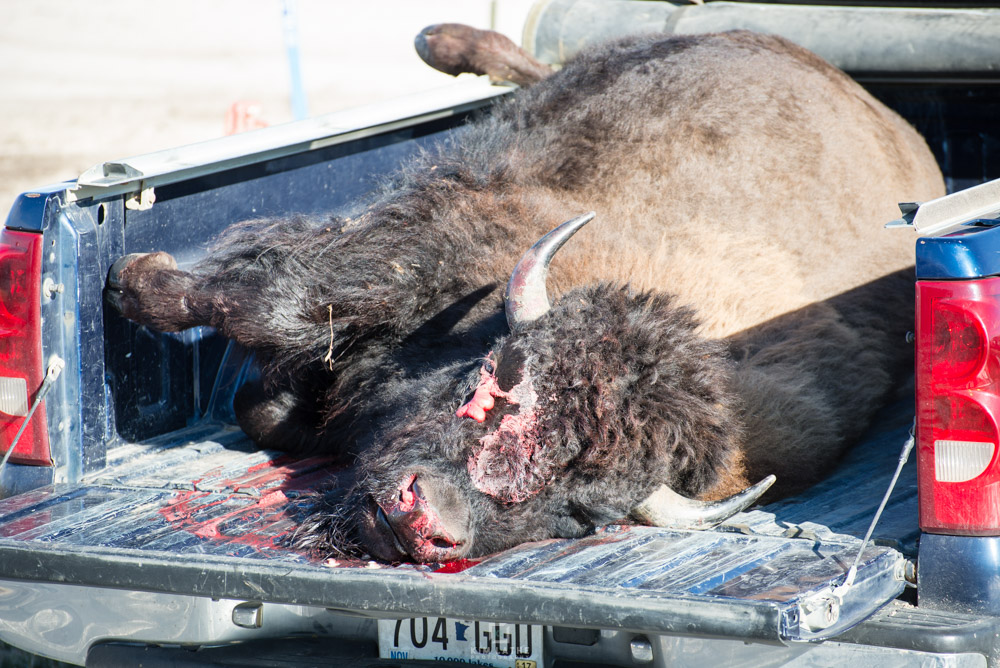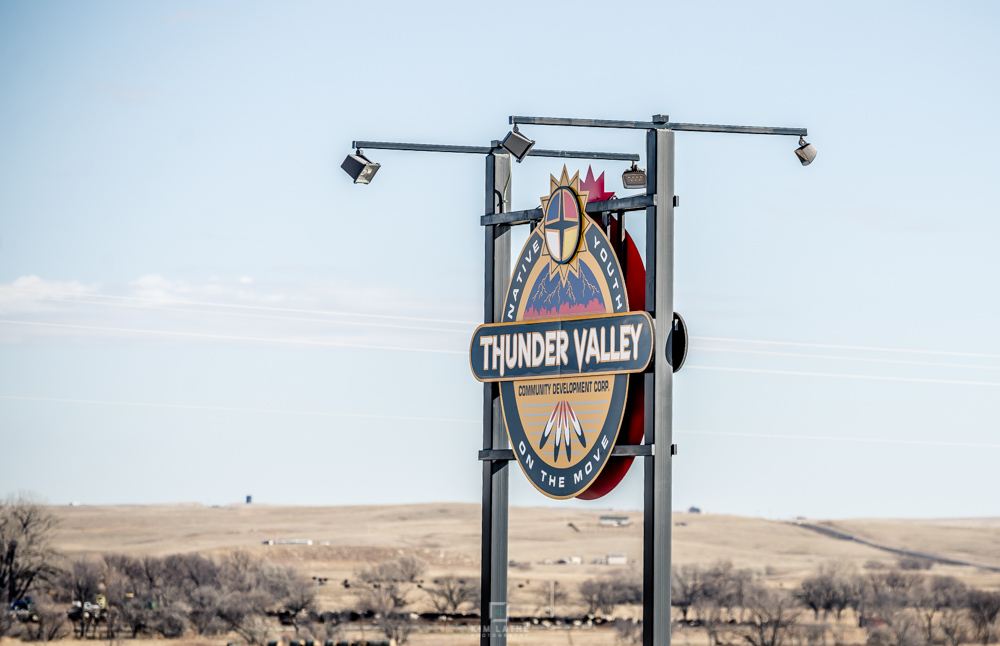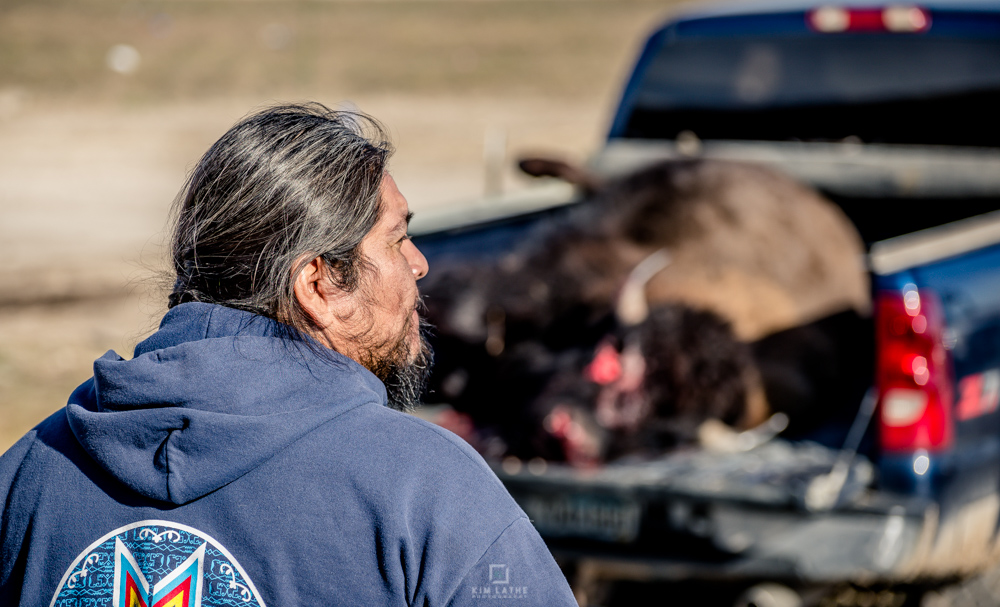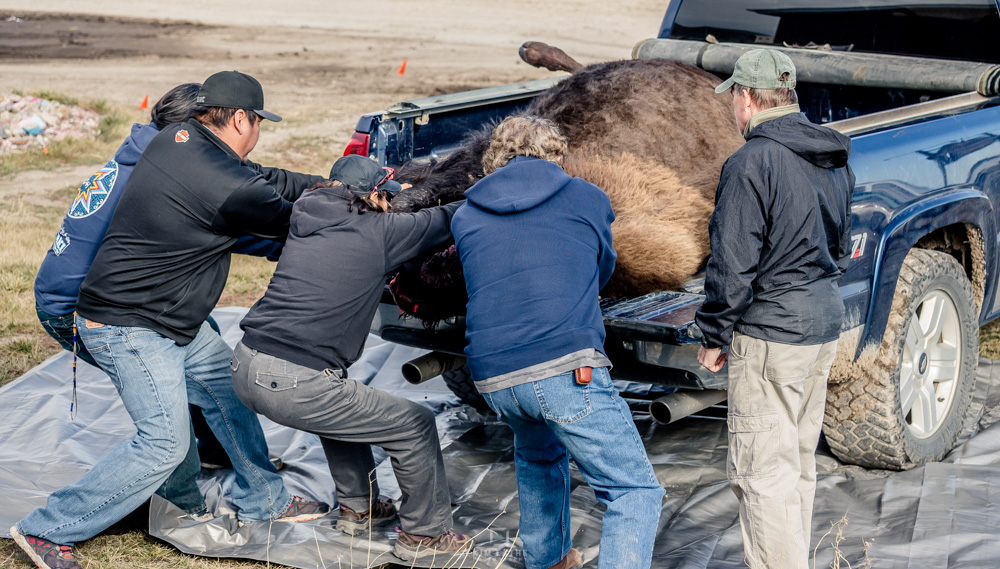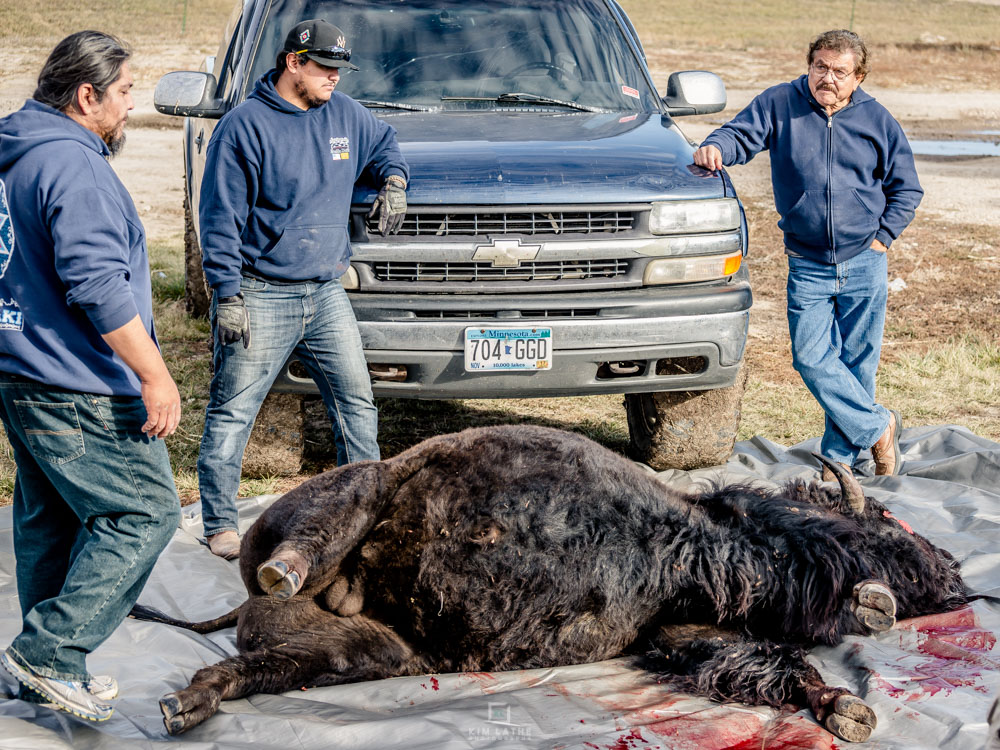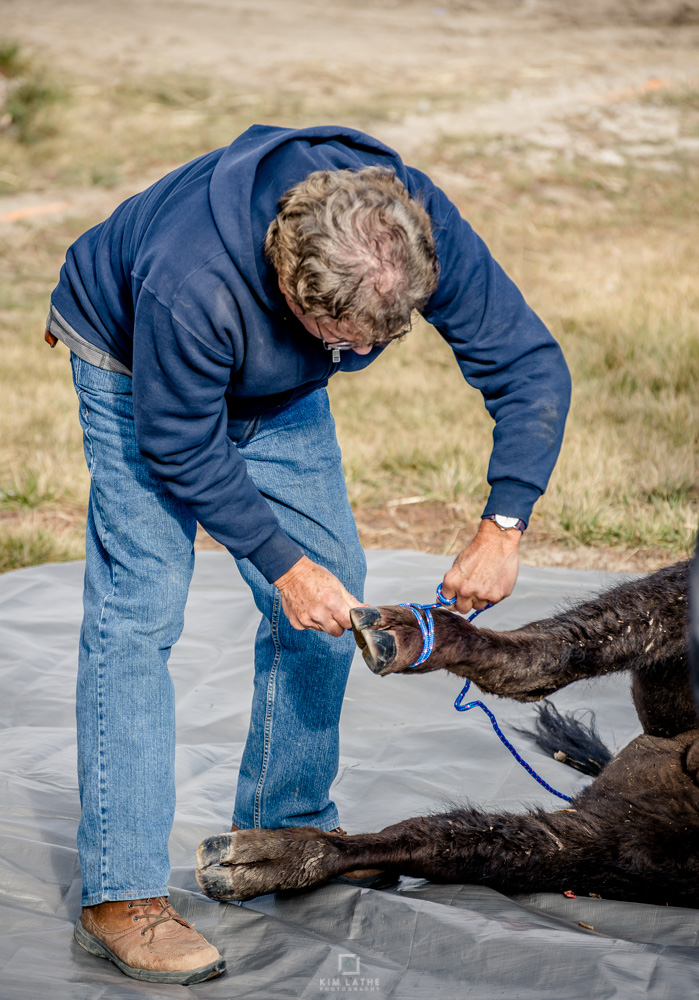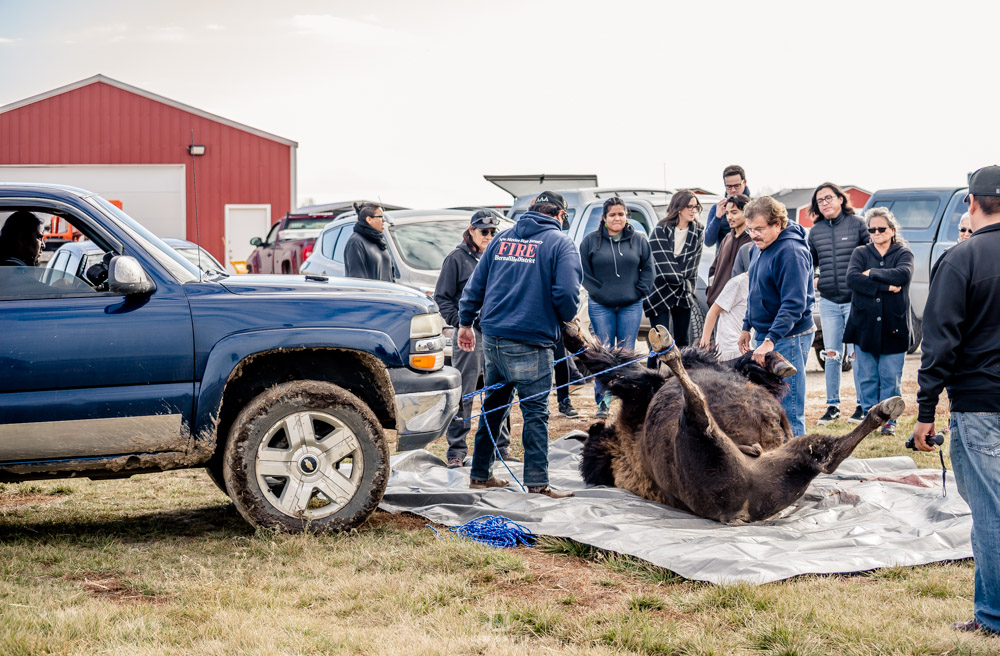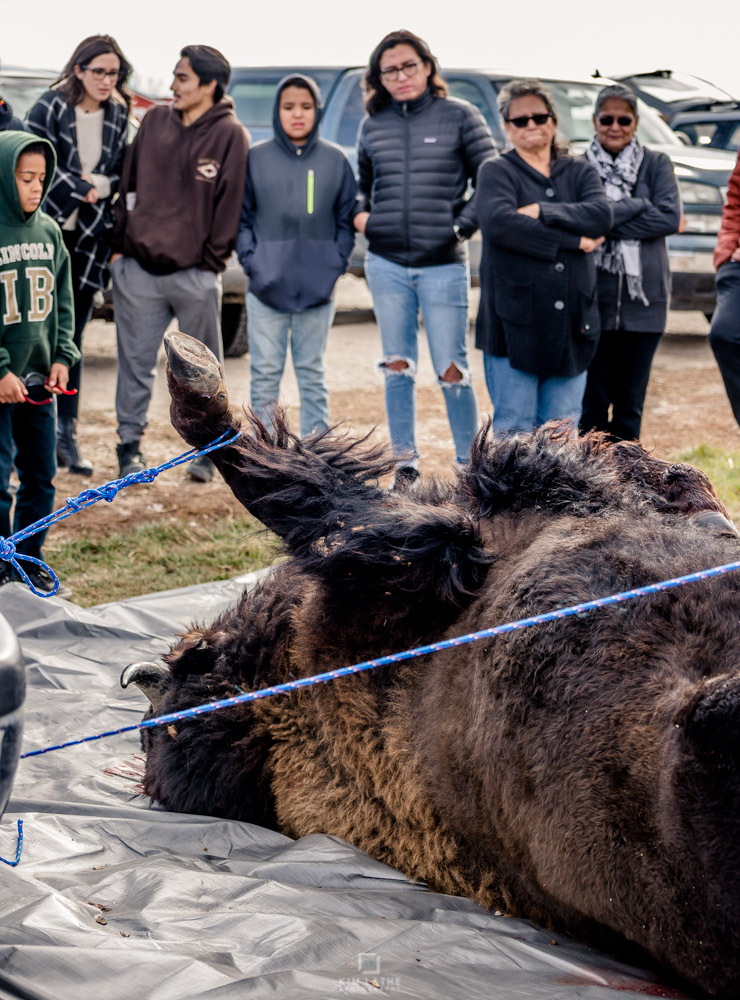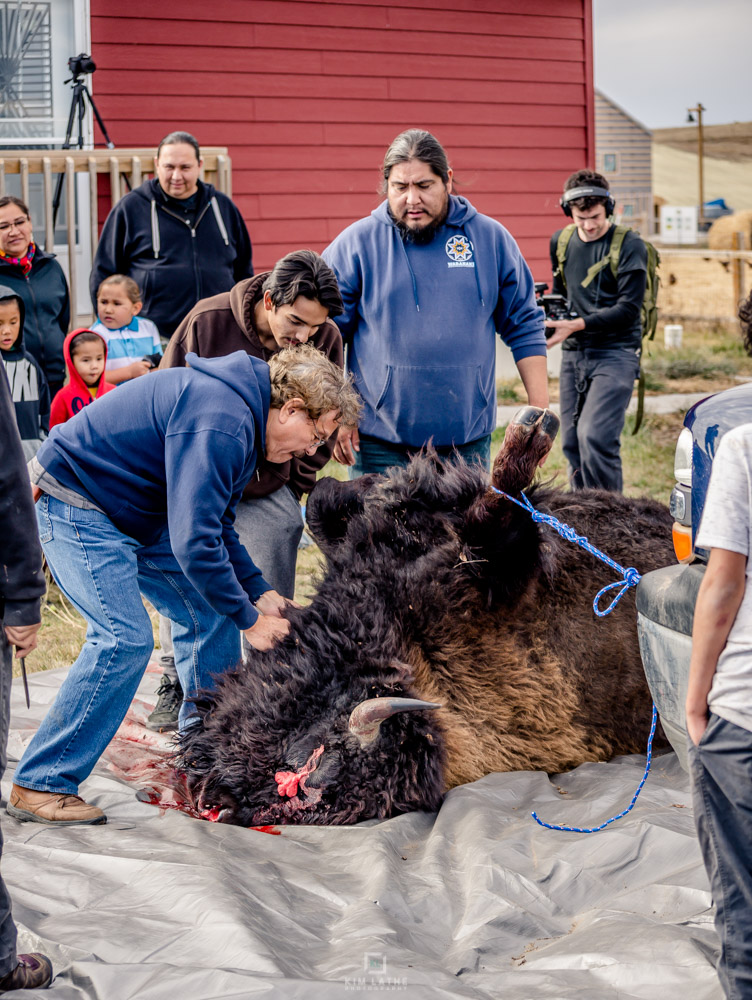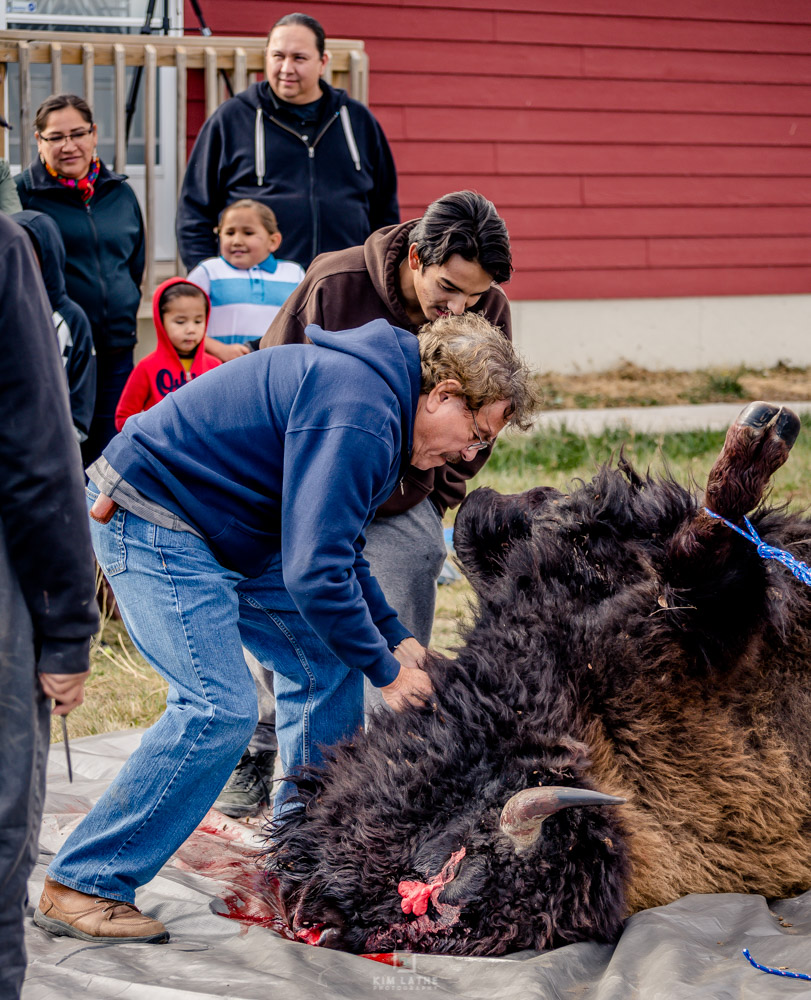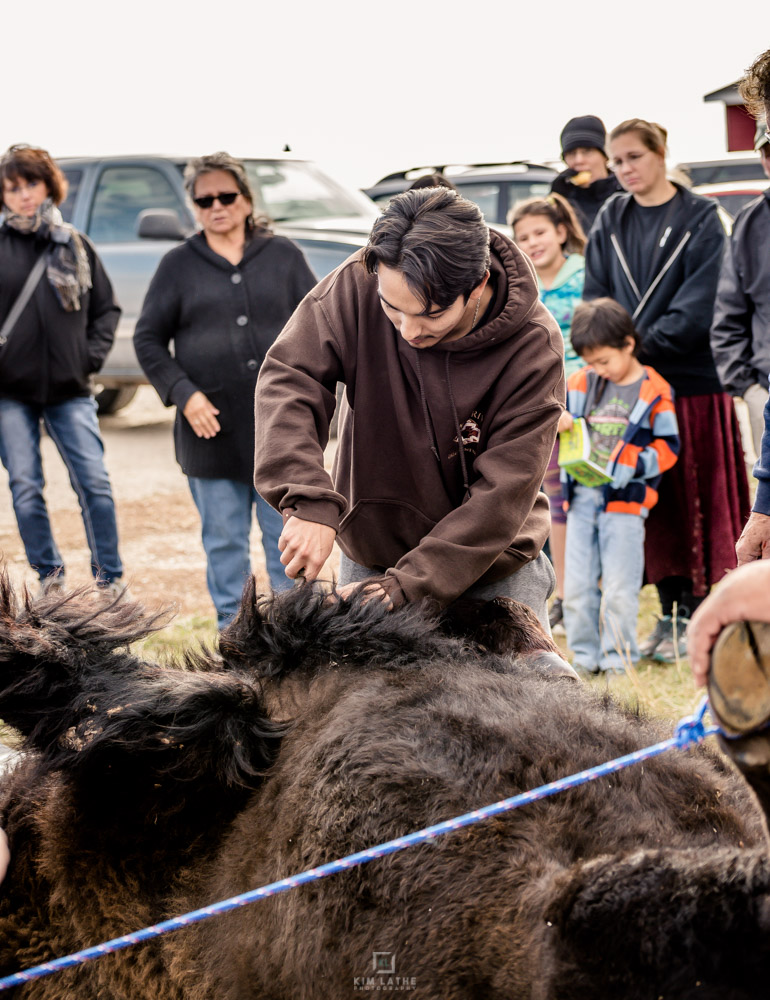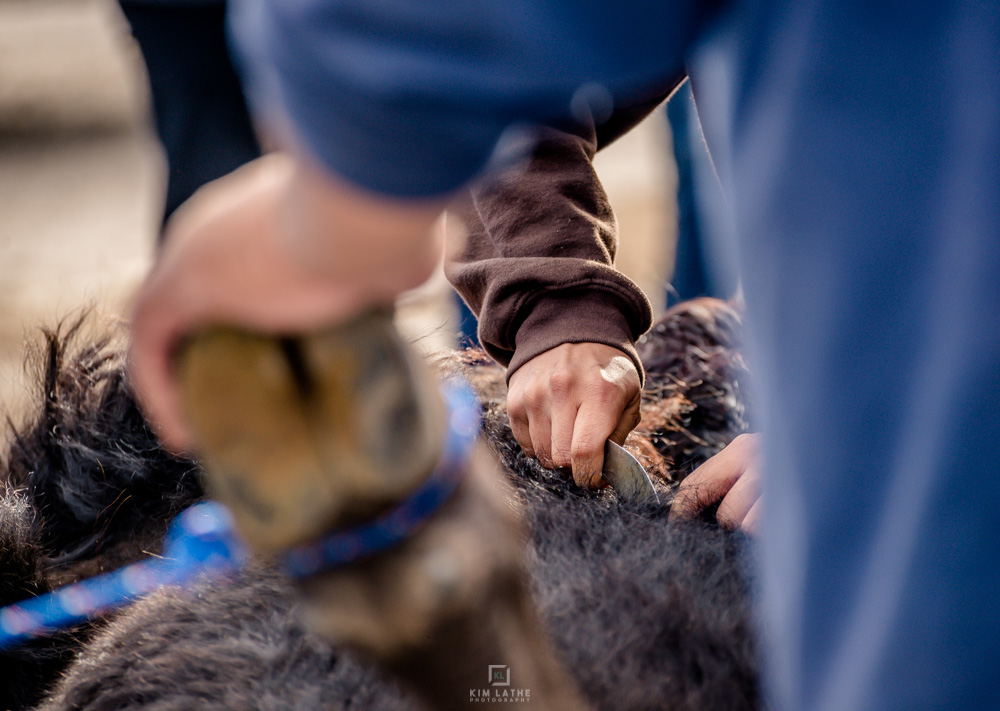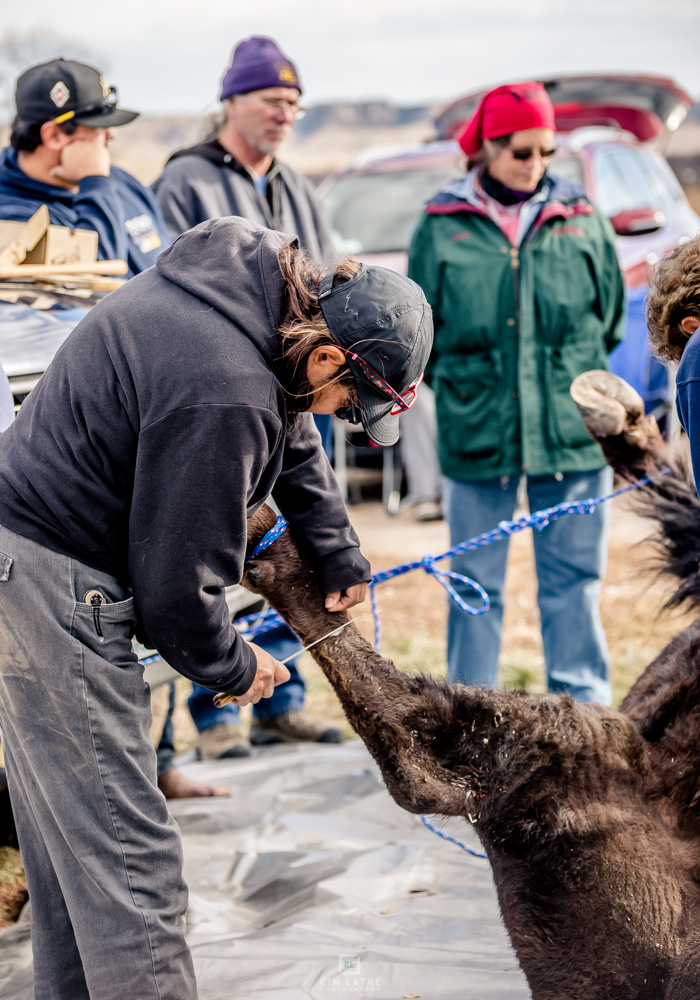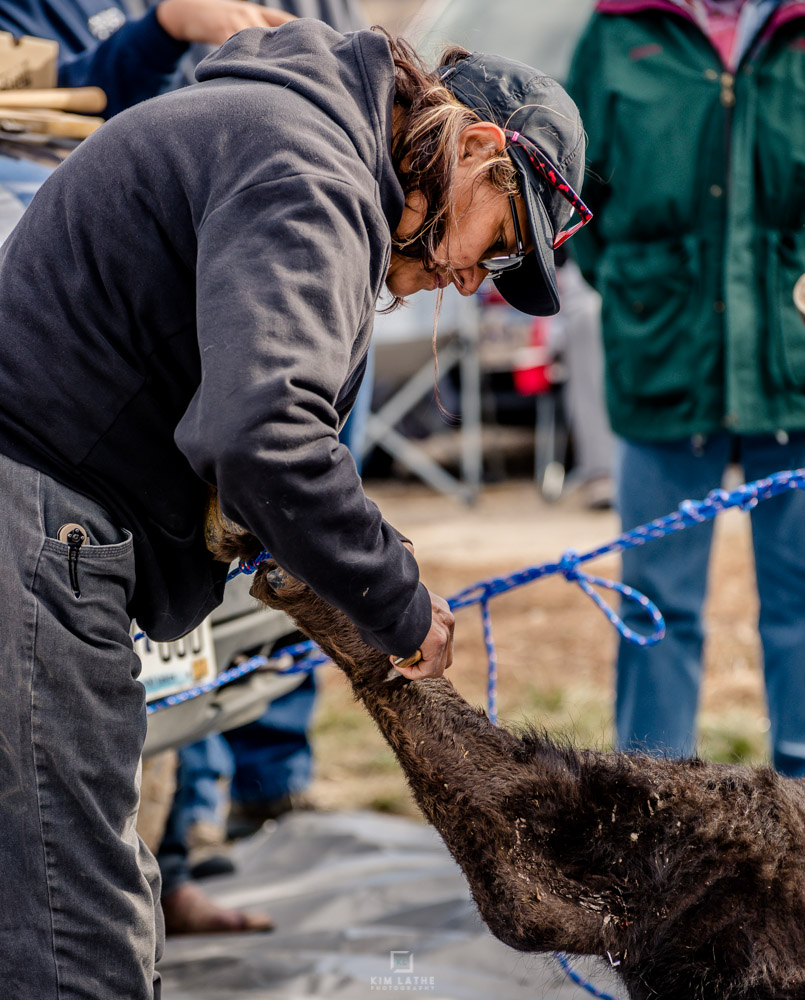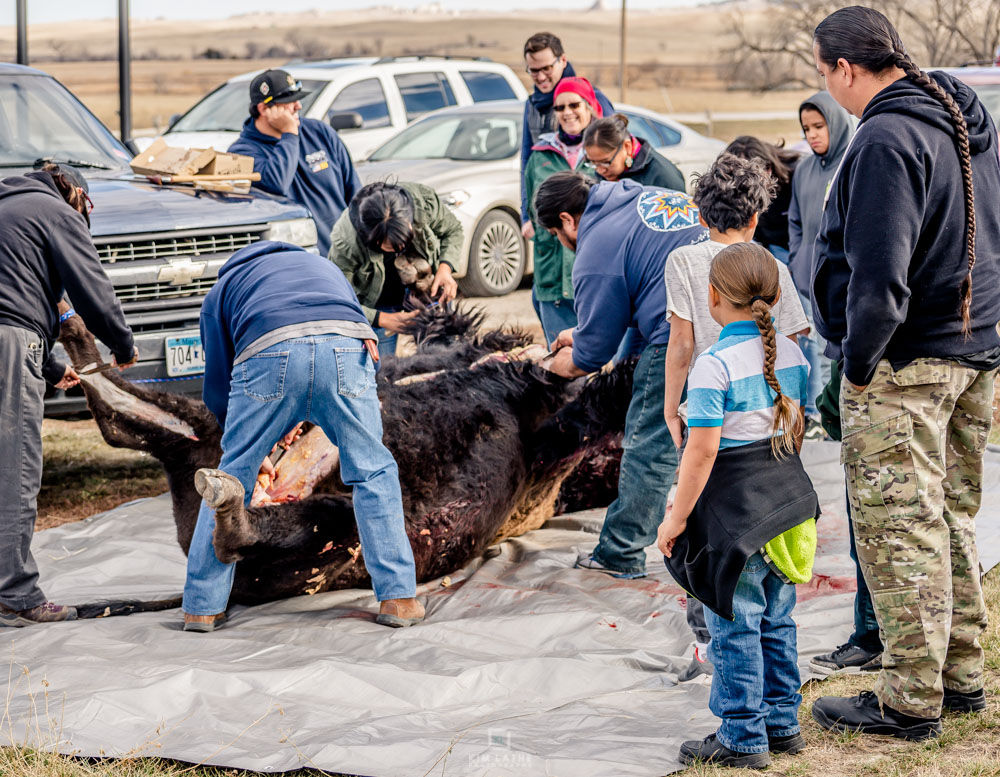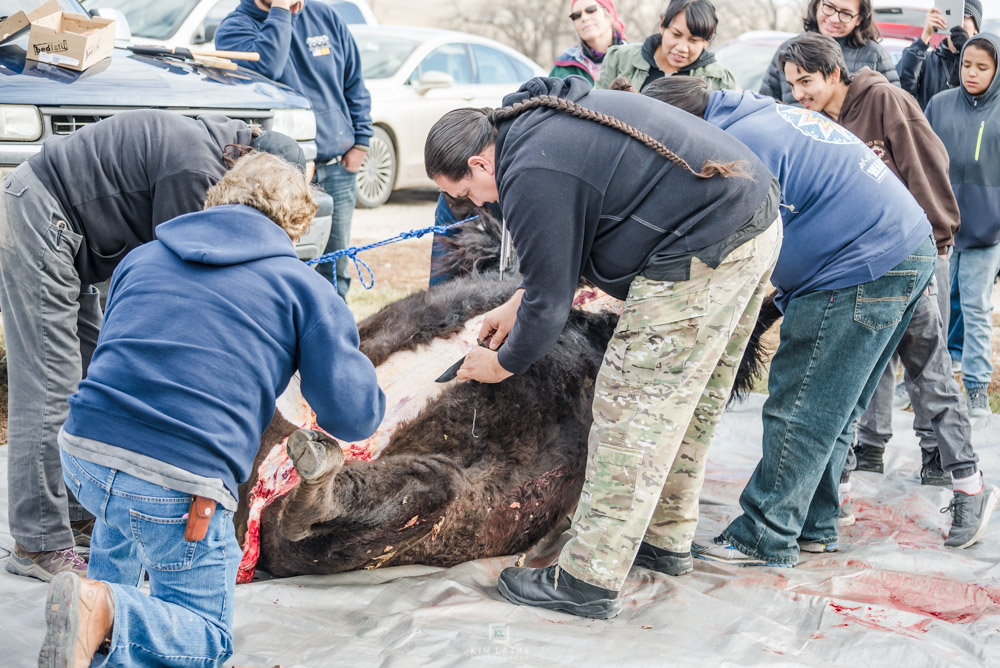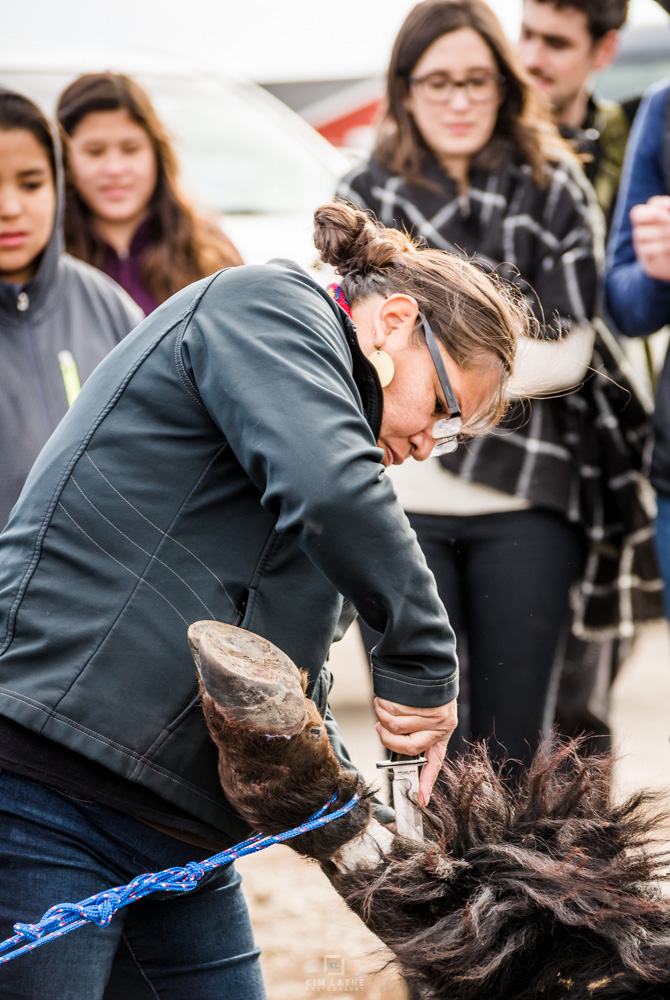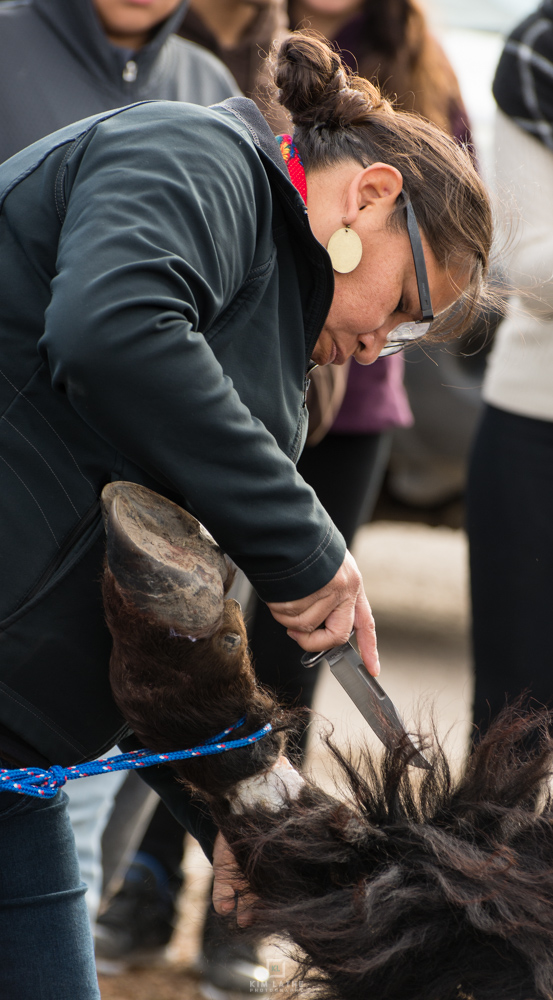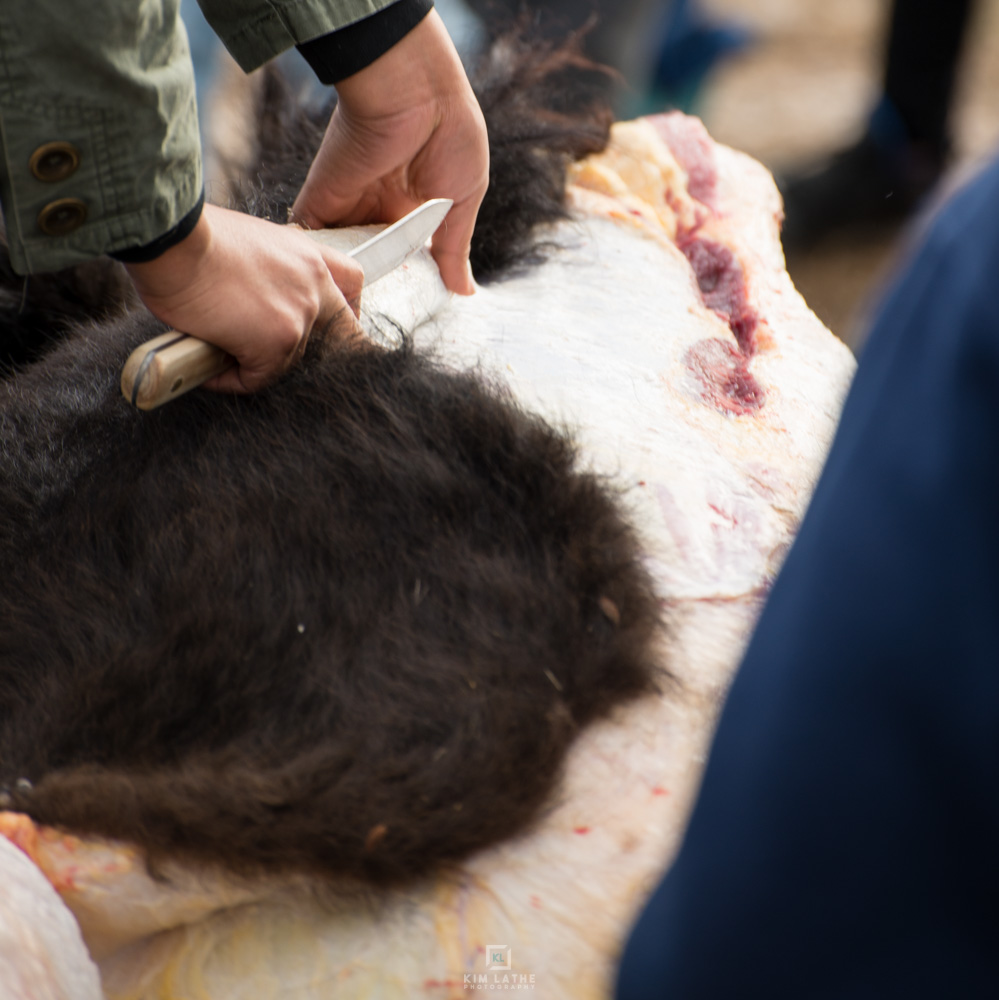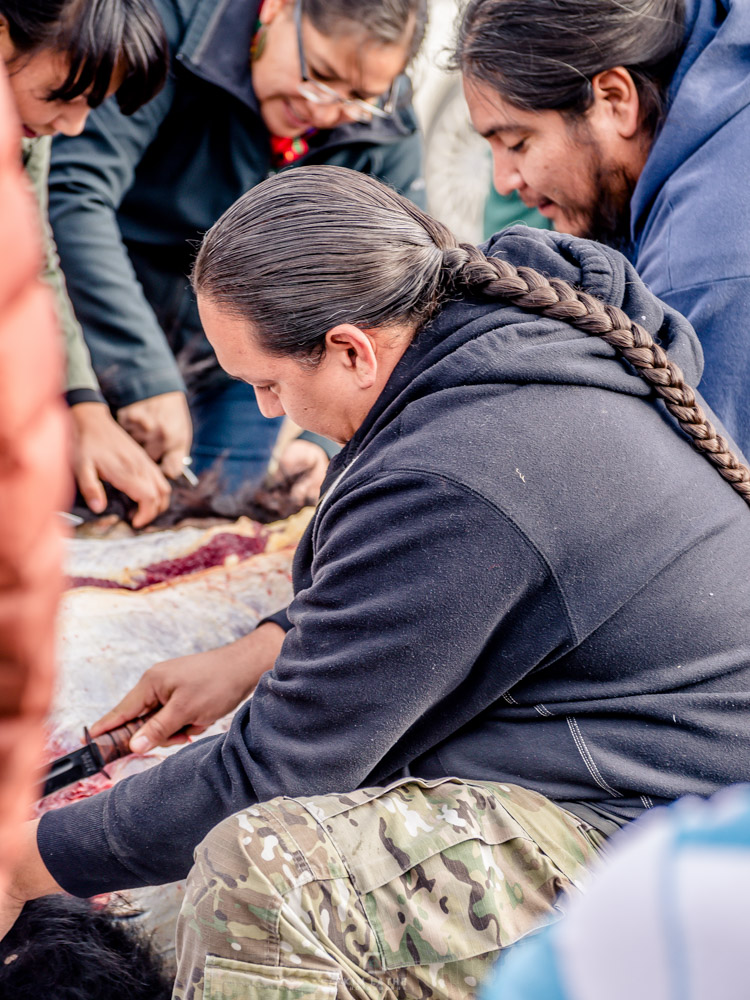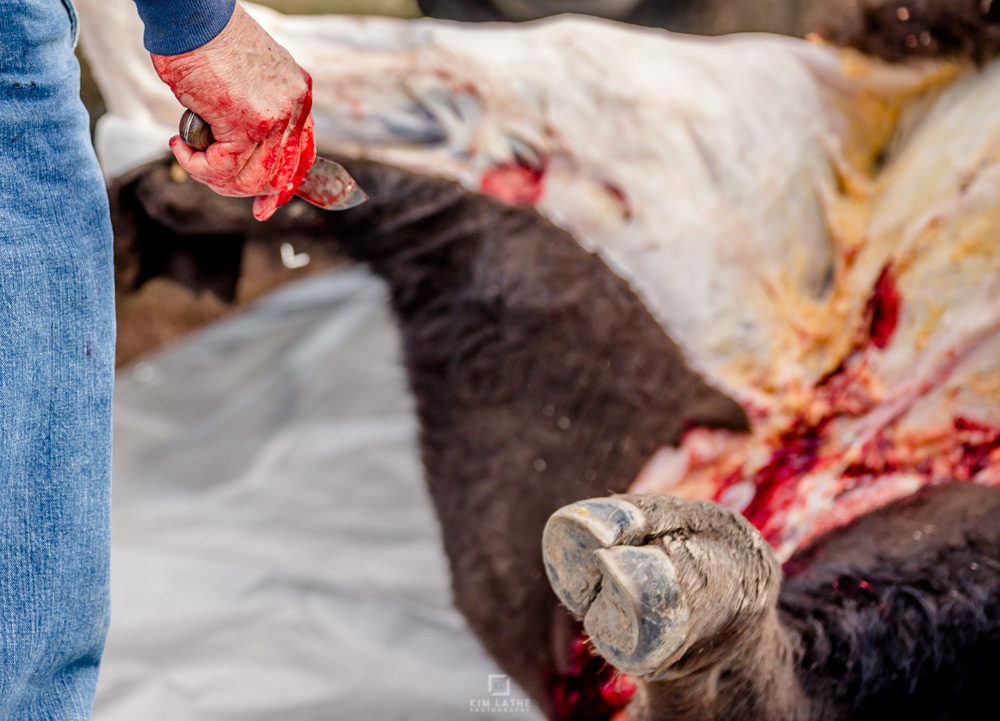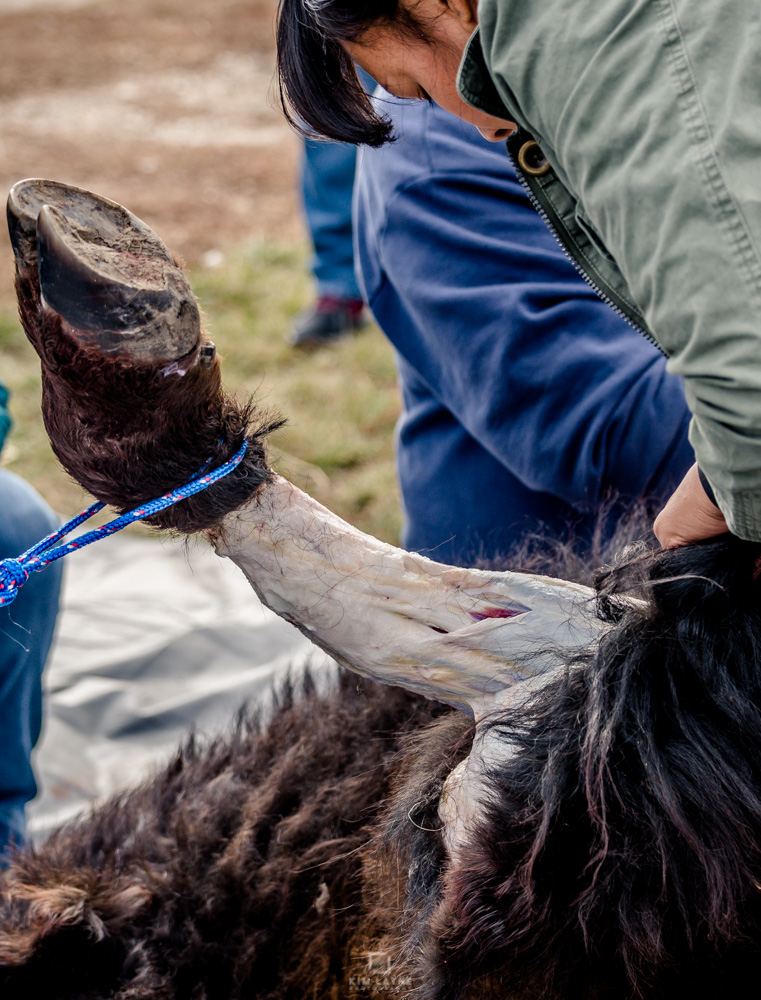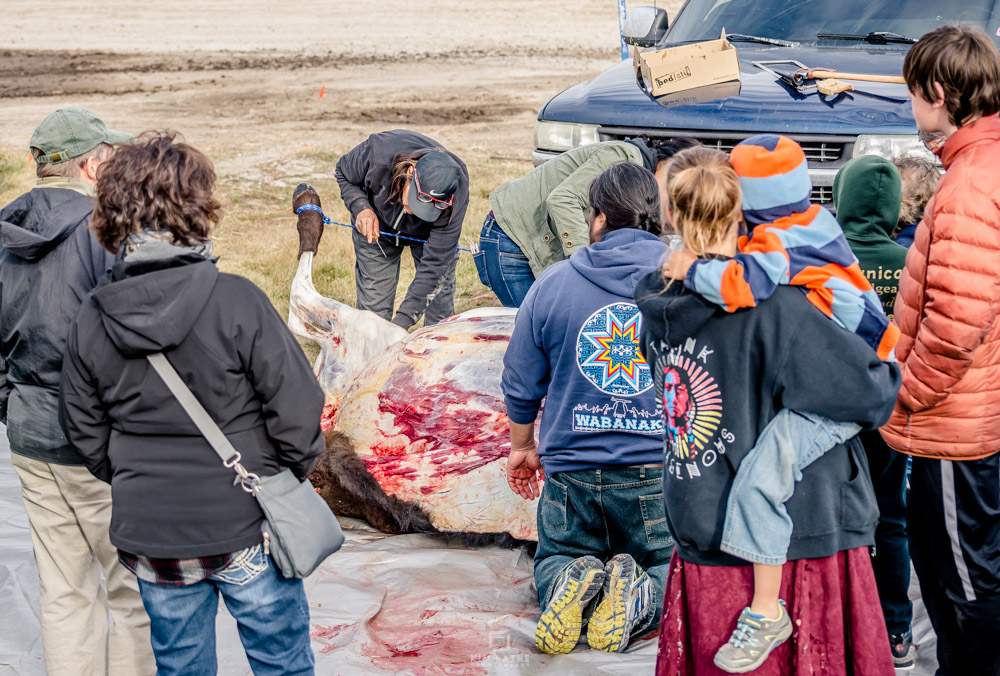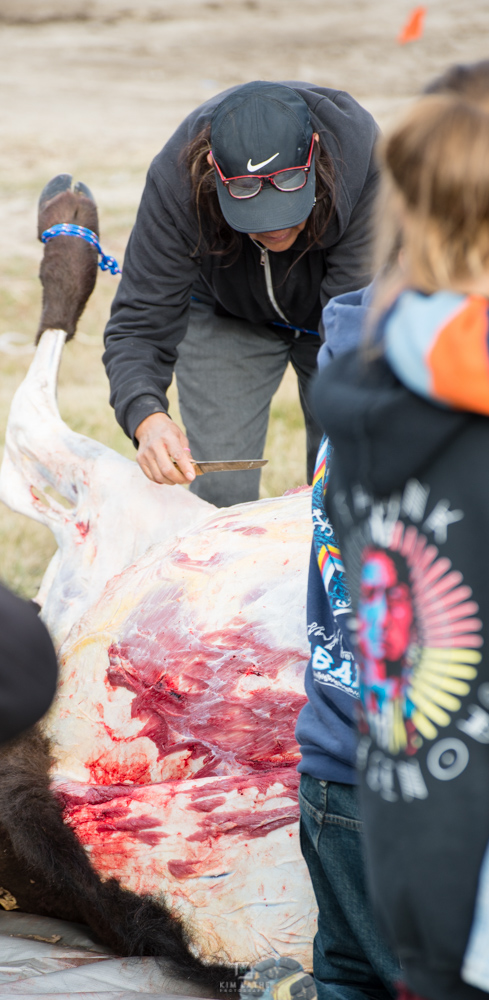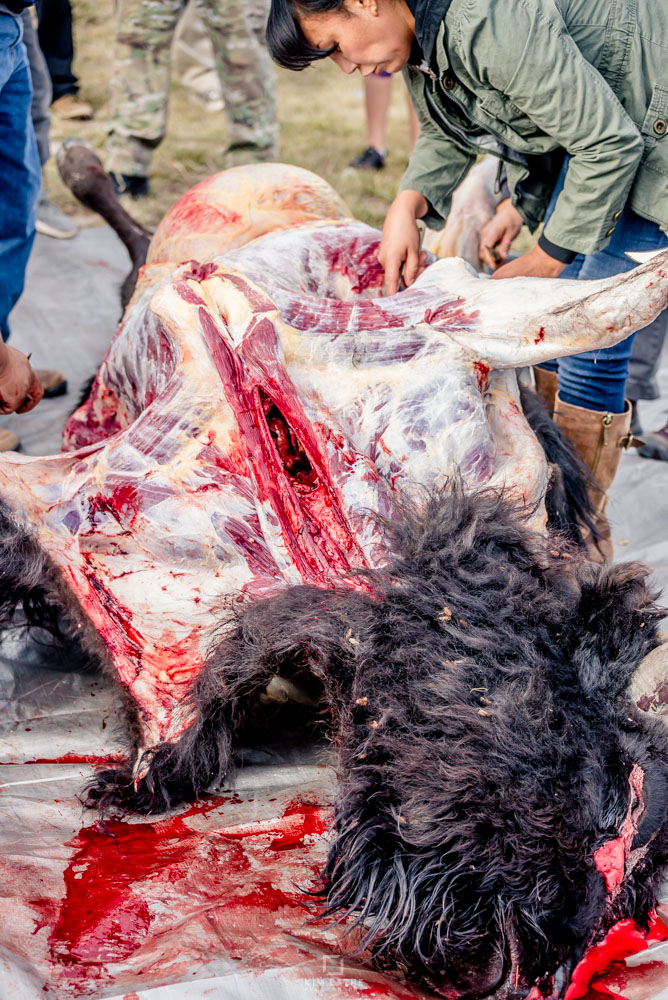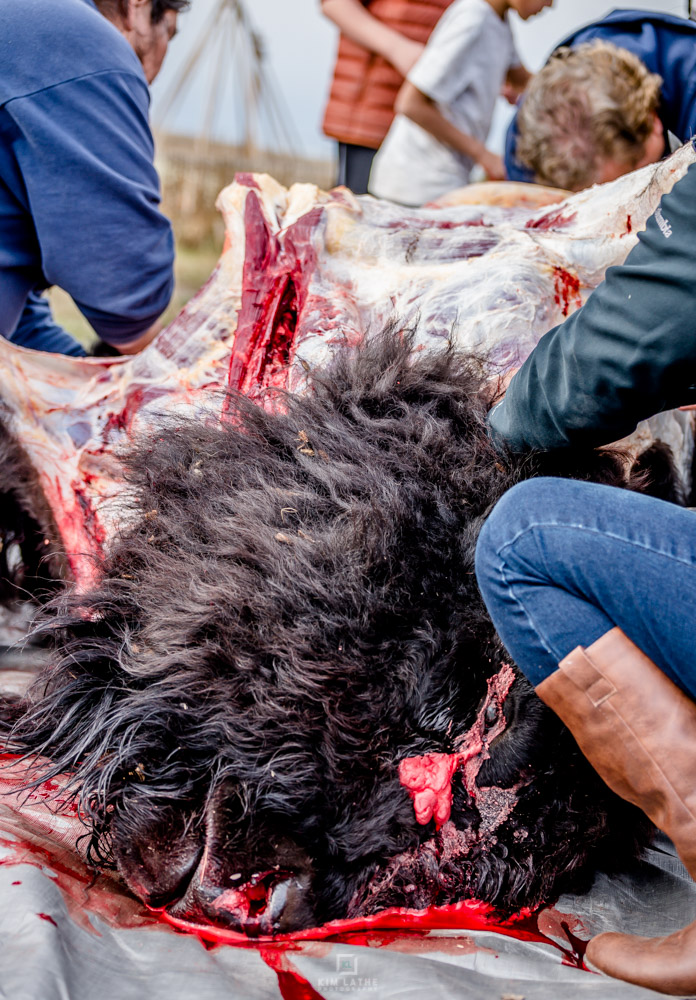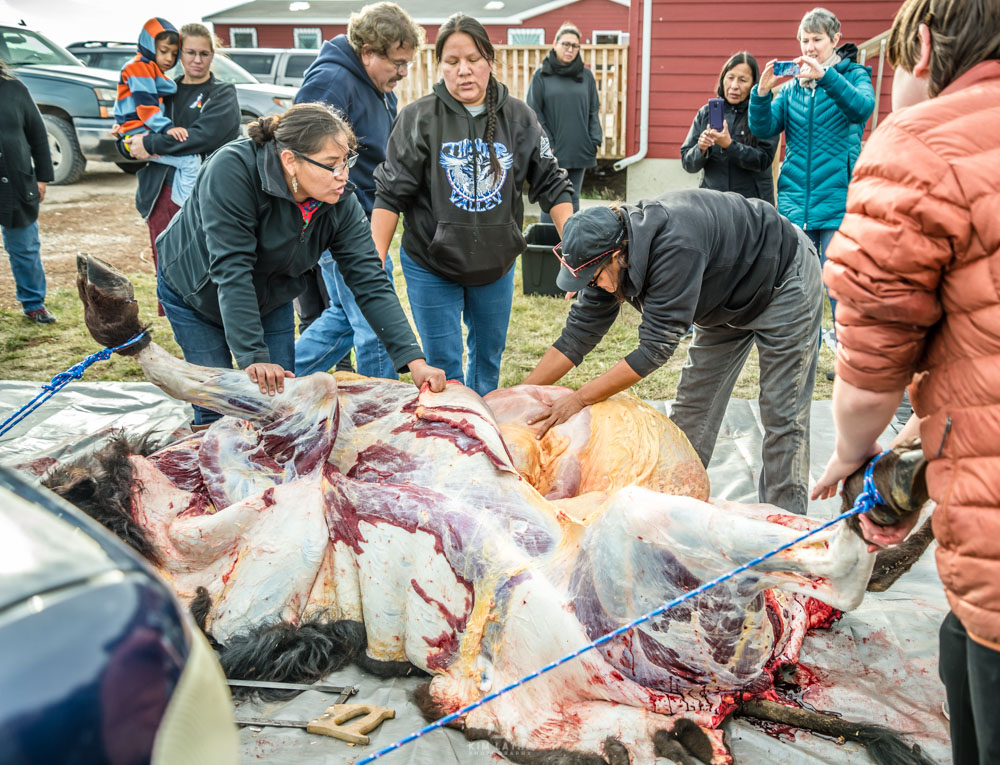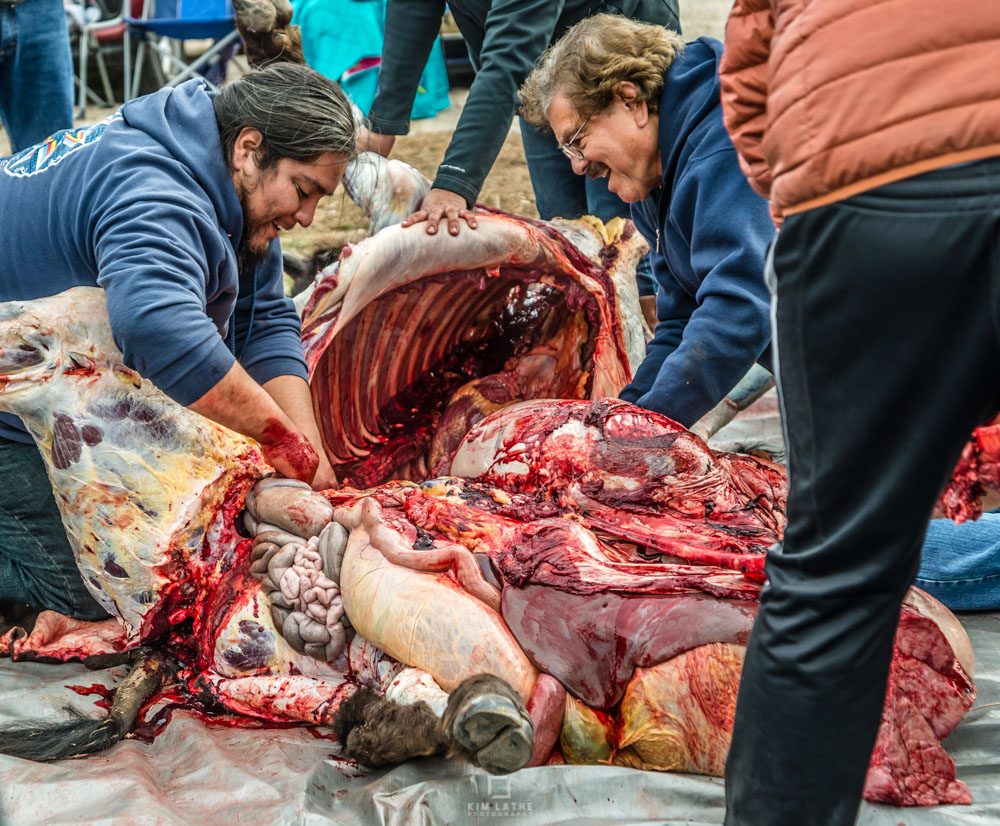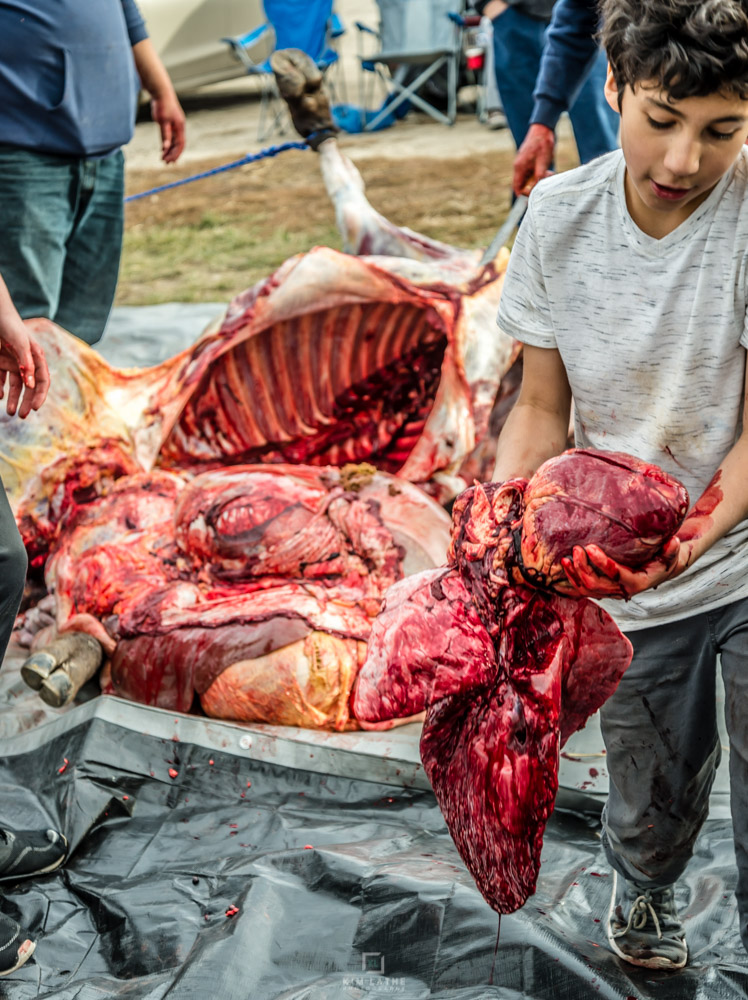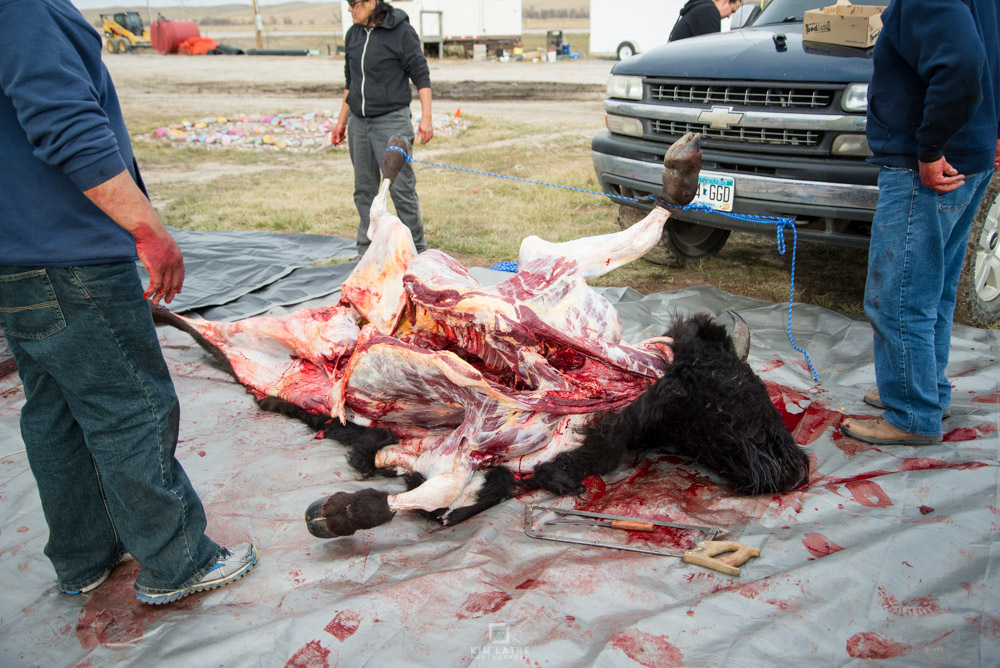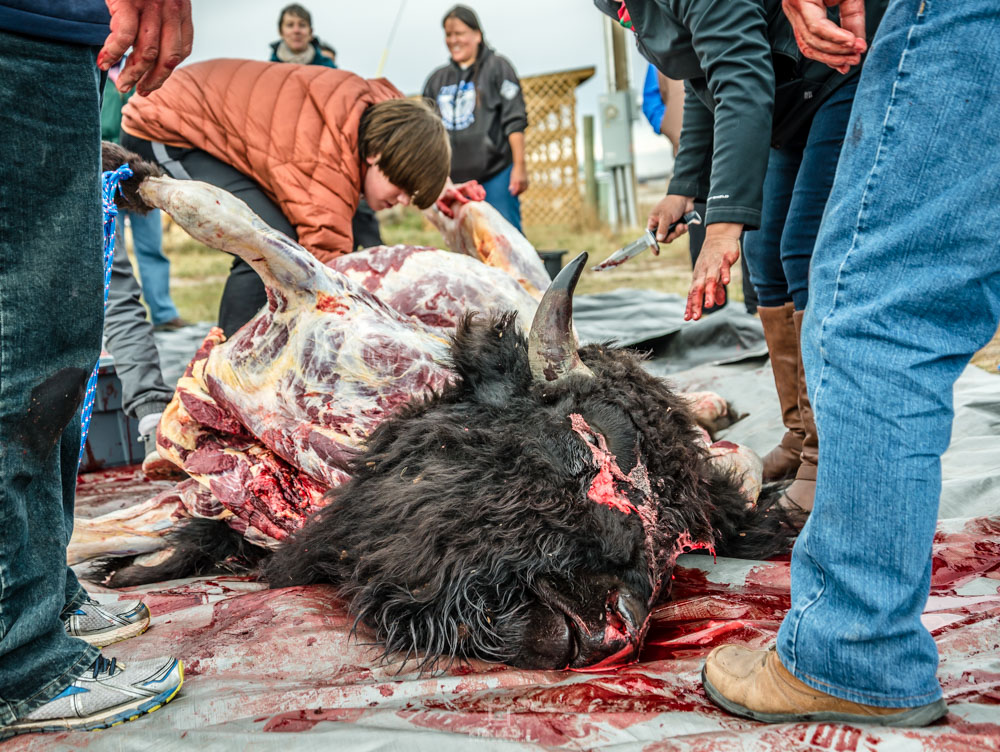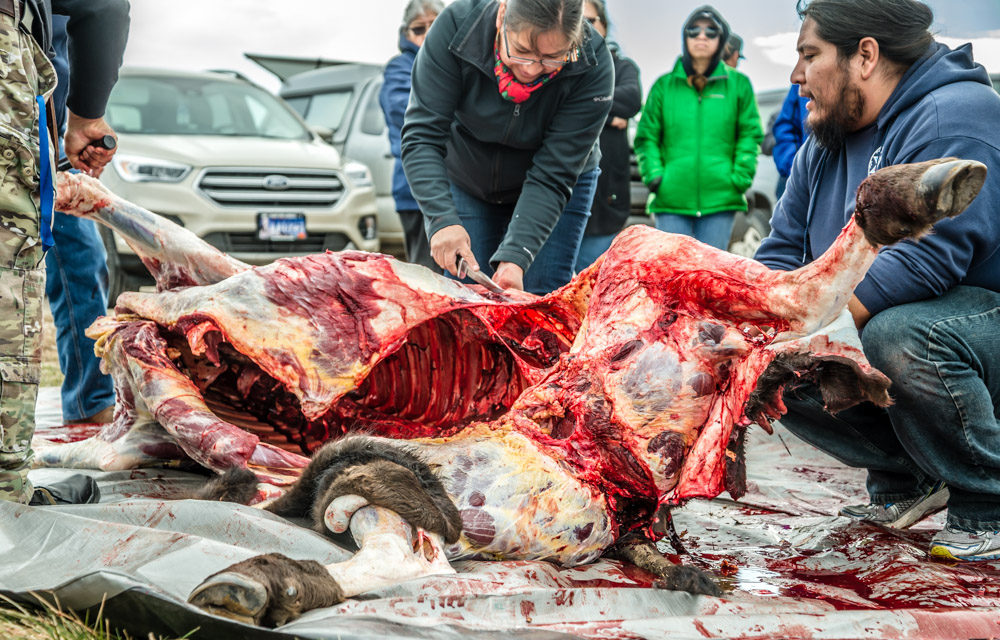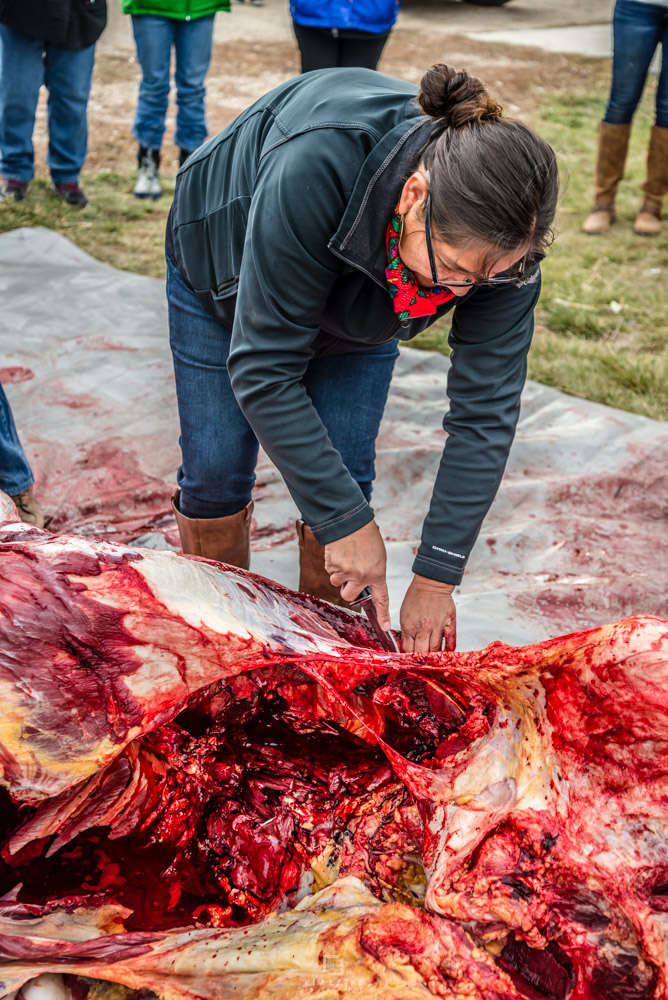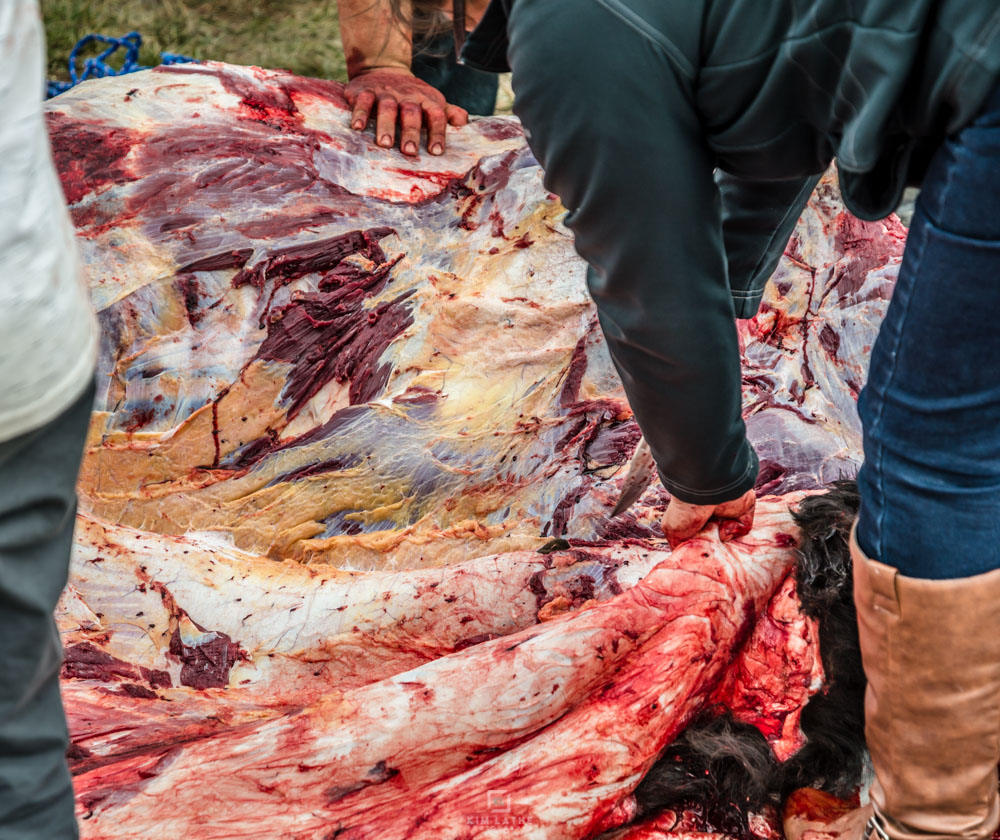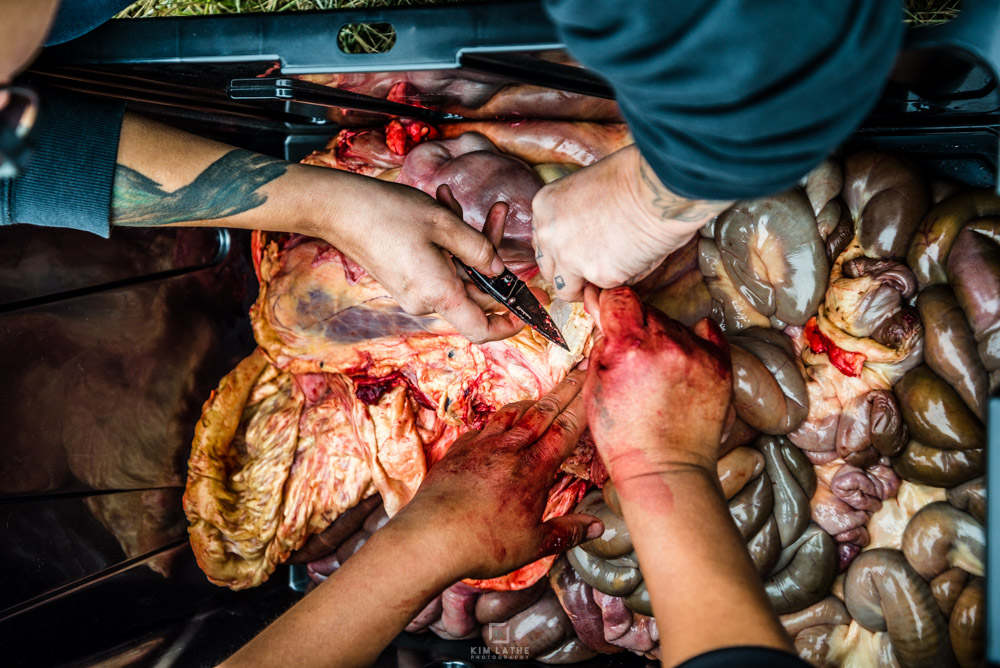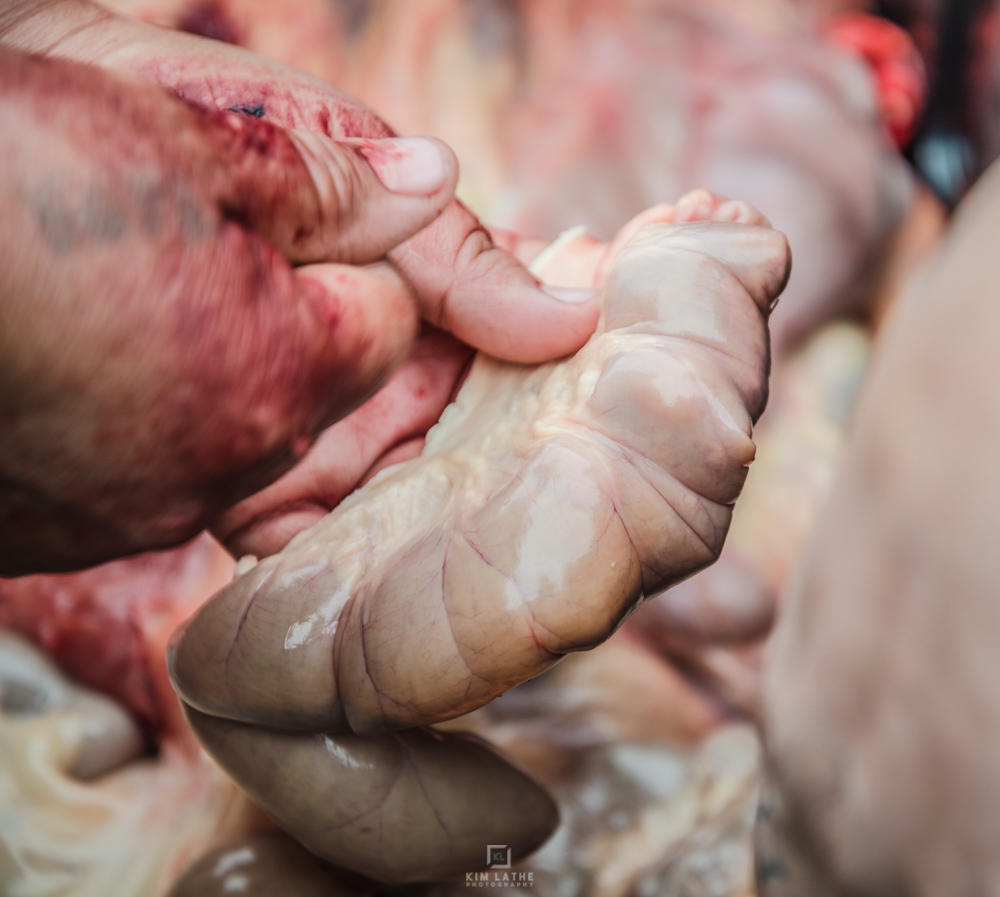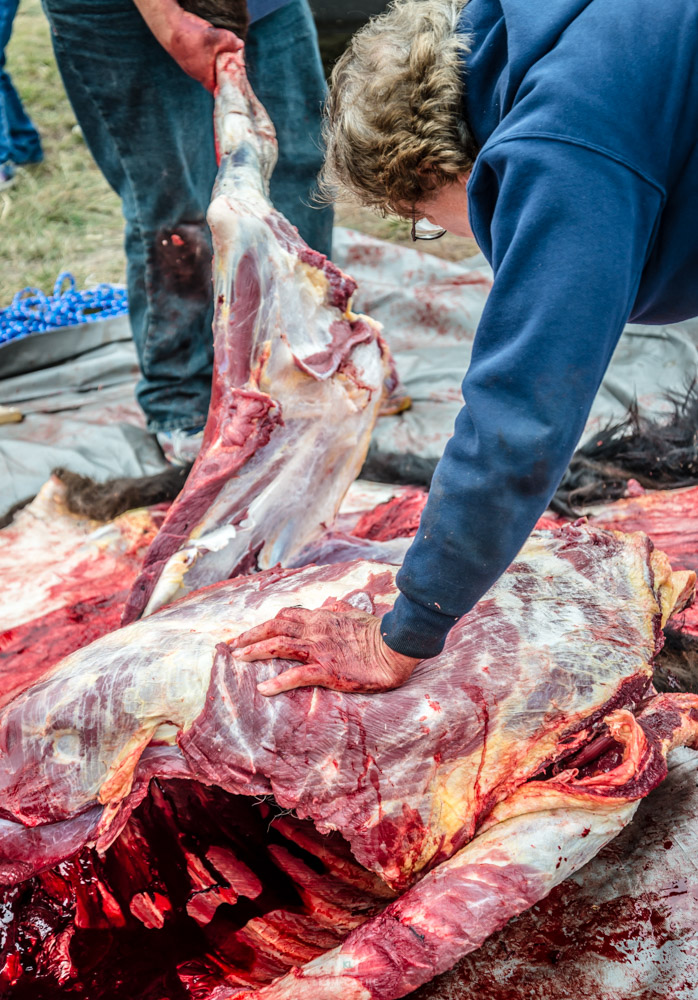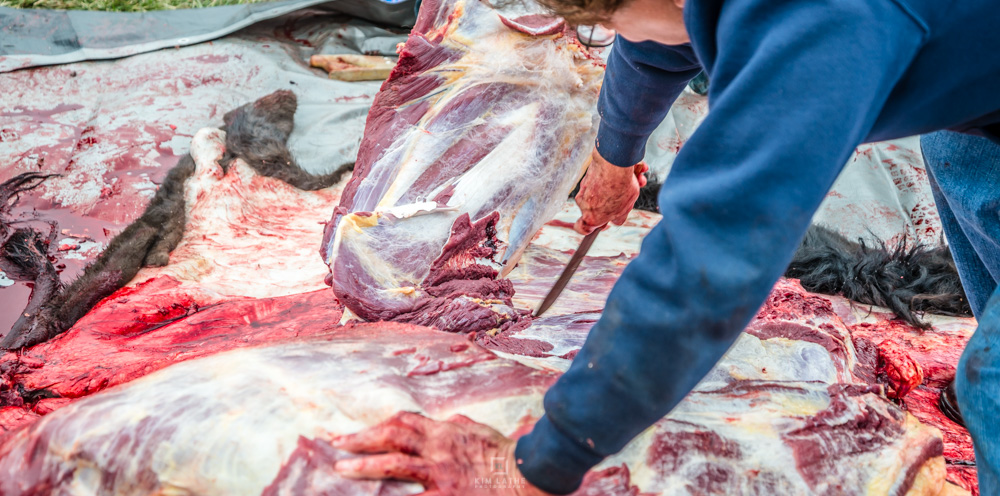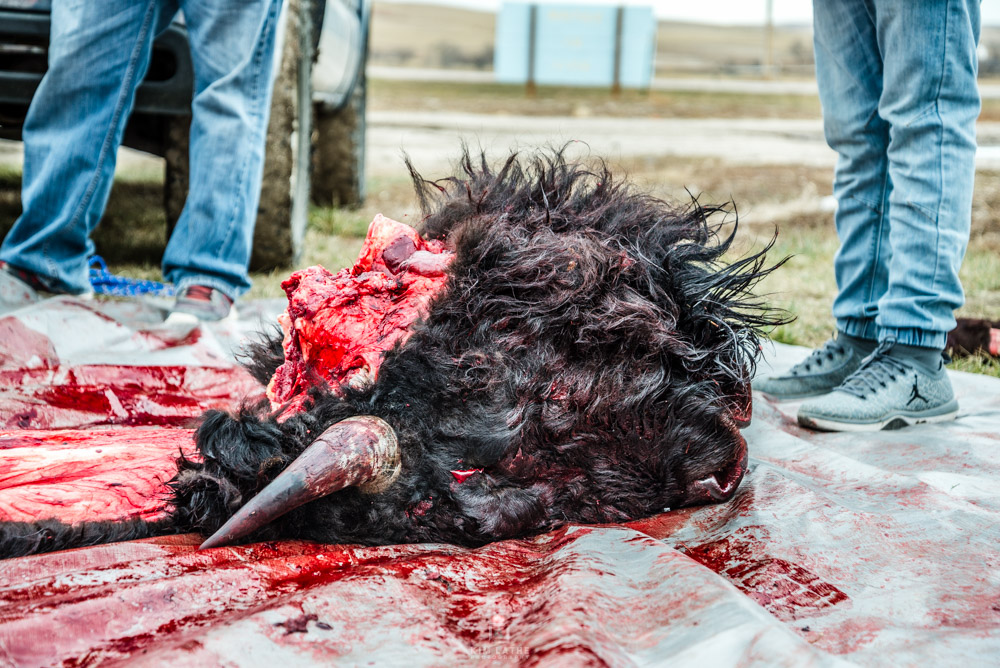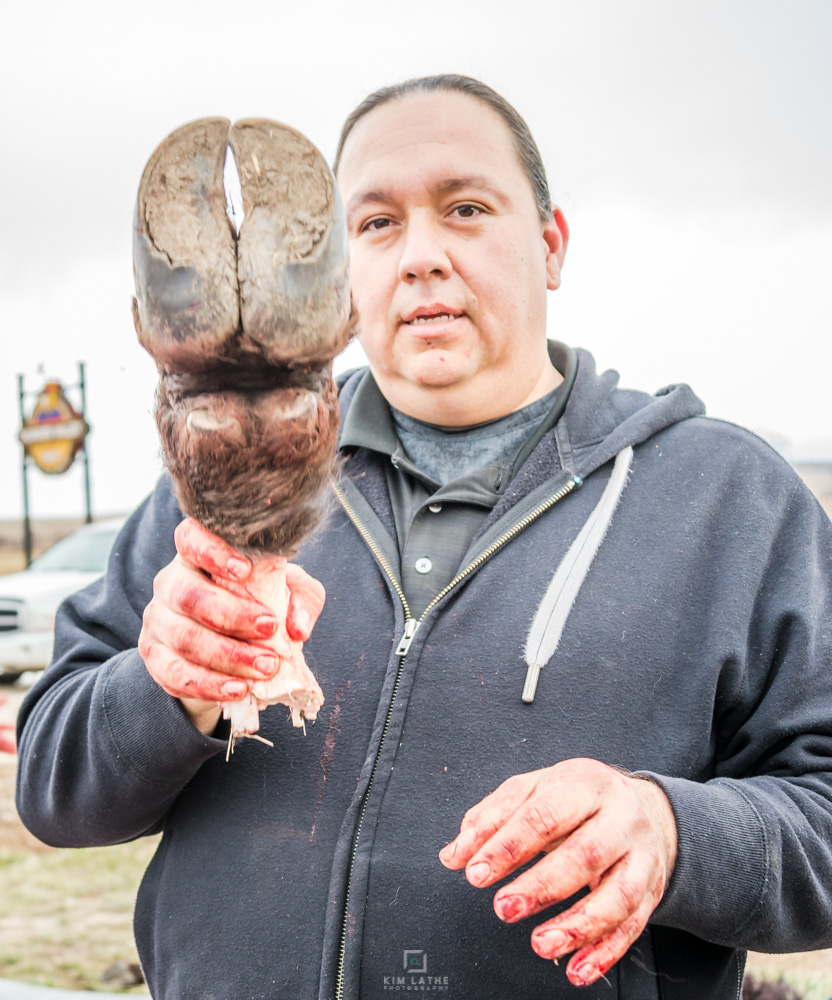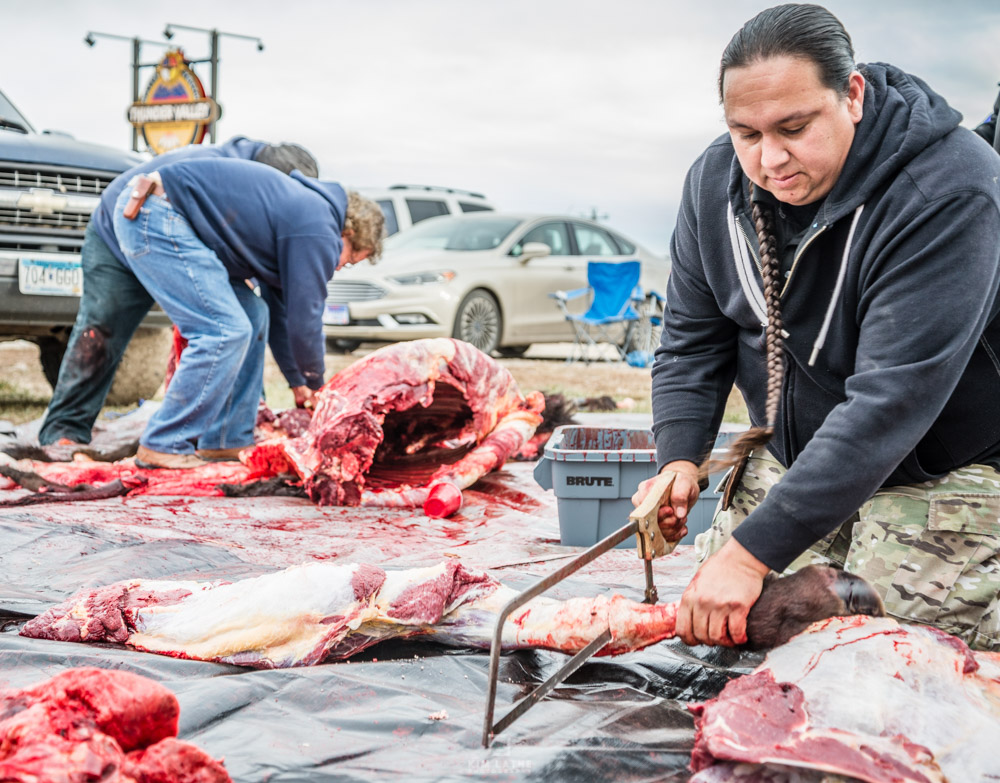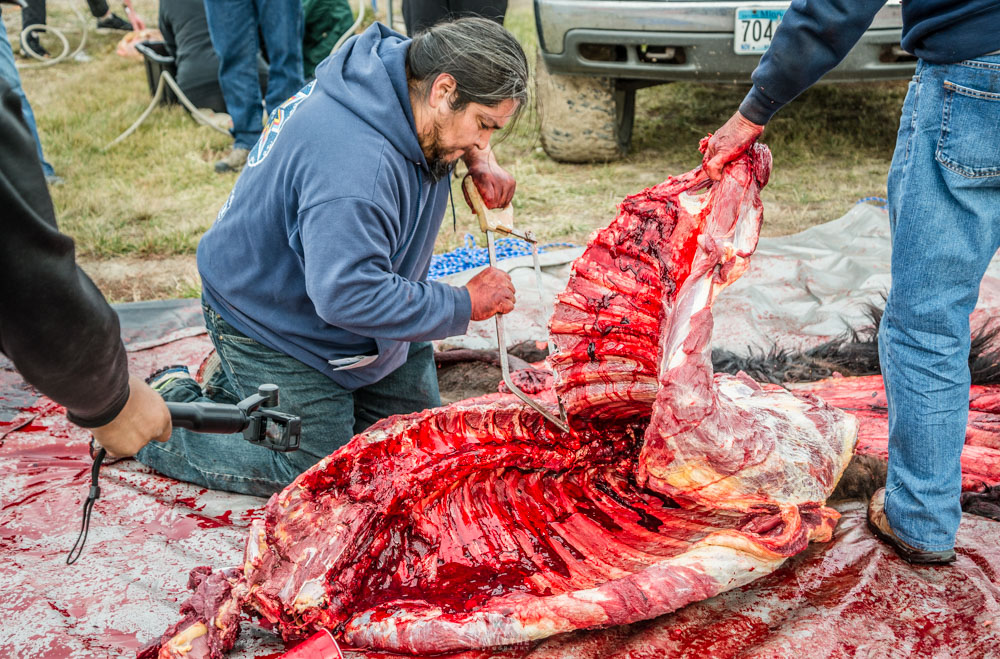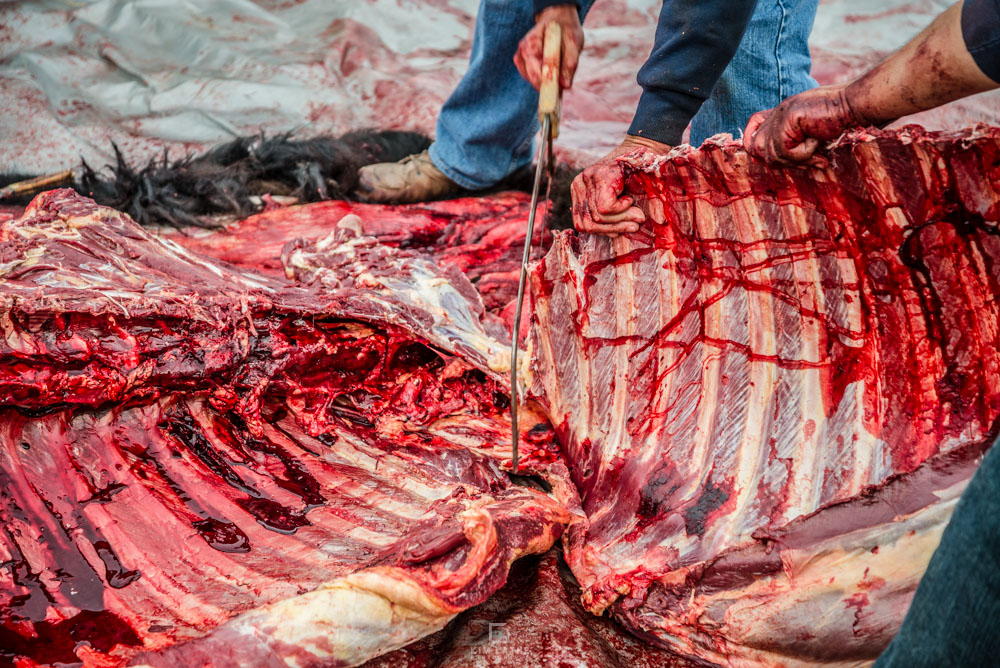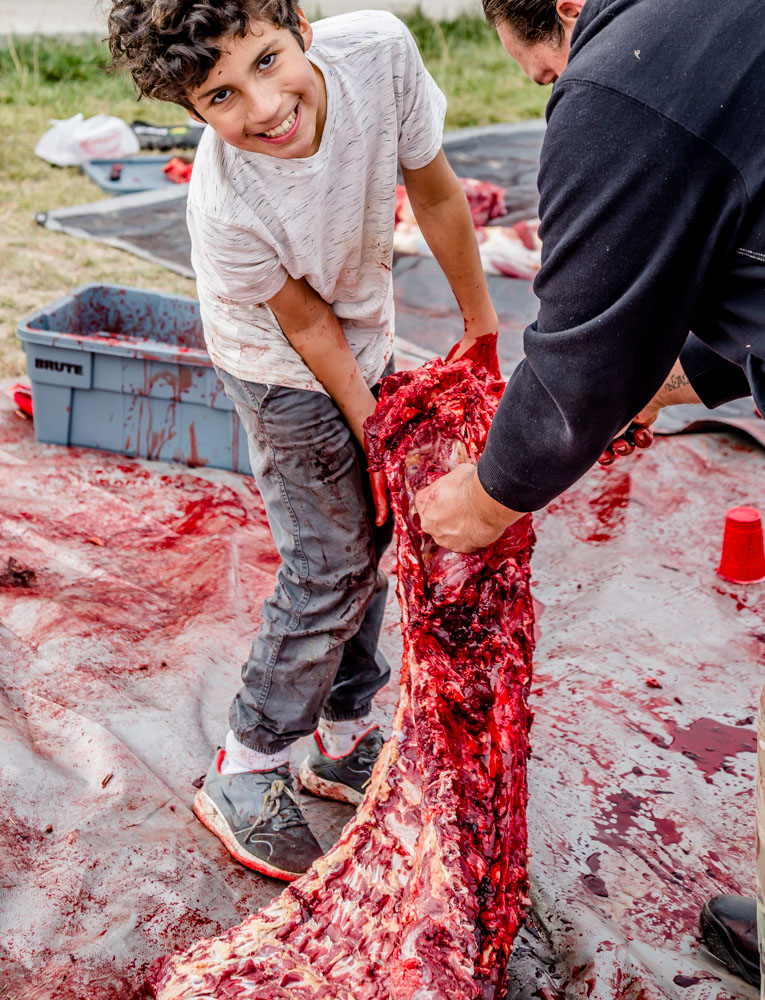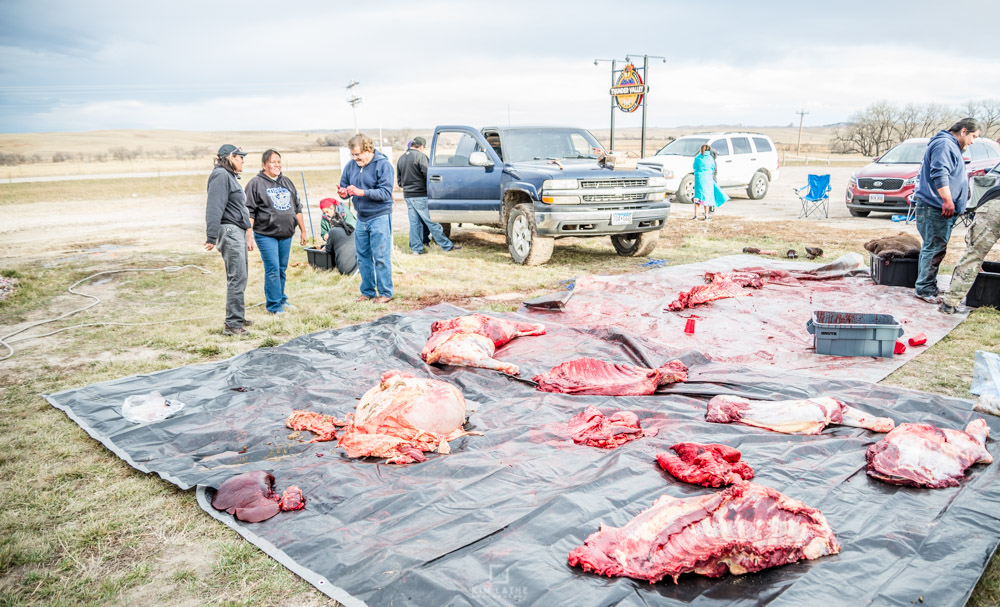On November 11, 2017, I attended a Tatanka Harvest at the Thunder Valley Community Development Corp. in Porcupine, South Dakota.
Wild bison, or Tatanka as the Lakota called them, once roamed North America in great numbers. Before white settlers came, an approximated 65 million bison roamed free and wild, but by 1890 there were less than 1,000 bison left. Wild bison nearly became extinct. Thanks to wildlife refuges and conservation efforts, the buffalo numbers have risen to approximately 500,000 in various herds, parks and ranches across North America today. You may notice I’m using both the words “bison” and “buffalo” – that is because the animals that originally roamed North America were wild bison. Pioneers cross-bred bison with the cattle they brought when they settled across the west, which created the animal we know today as a buffalo. An estimated 30,000 pure bison live today, half of those free-roaming.
The indigenous people highly revered bison and relied on them for survival, using every part of the animal. When they killed a bison, no part of the animal went to waste. These animals were very symbolic to the Native Americans, and because they were so honored I am in awe of these creatures every time I cross paths with them (which is a lot since I live in South Dakota). No matter how many times I’ve seen a buffalo, I stop the car and get out and just share silent space with them for a moment (and snap a few photos if I have my camera with me).
Below is some information on the ways these animals were used to sustain people.
MEAT: Every piece of meat was eaten in various forms (raw, cooked, jerky).
SKULL: Altar at religious ceremonies.
HORNS: cups, fire carriers, powder horn, spoons, ladles, headdresses, signals, toys (wedges to split wood, tips, curing blood diseases, blood-sucking cups, scrapers with a blade inserted into them, parts of bows.
BONES: knives, arrowheads, shovels, tools, etc., needles, awls were made to puncture the skins for sewing. Shoulder blades made digging hoes. Large leg bones were used as ground pegs. Bones were shaped as tools to flatten porcupine quills used in decoration.
BRAINS: Used in hide preparation (tanning hides).
HIDE/BUCKSKIN: moccasin tops, cradles, winter robes, bedding, breechclouts, shirts, leggings, lance covers, belts, dresses, pipe bags, pouches, paint bags, pouches, dolls, coup flag covers, quivers, tipi covers, gun cases, [Elk, Deer or Antelope hides were preferred for dresses for women as they were lighter than the heavier Buffalo skins.
RAWHIDE: containers, clothing, headdress, food, medicine bags, shields, buckets, moccasin soles, rattles, drums, drumsticks, splints, cinches, ropes, belts, bullets, pouches, saddles, horse masks, lance cases, armbands, quirts, bull boats, knife cases, stirrups, thongs, horse ornaments.
